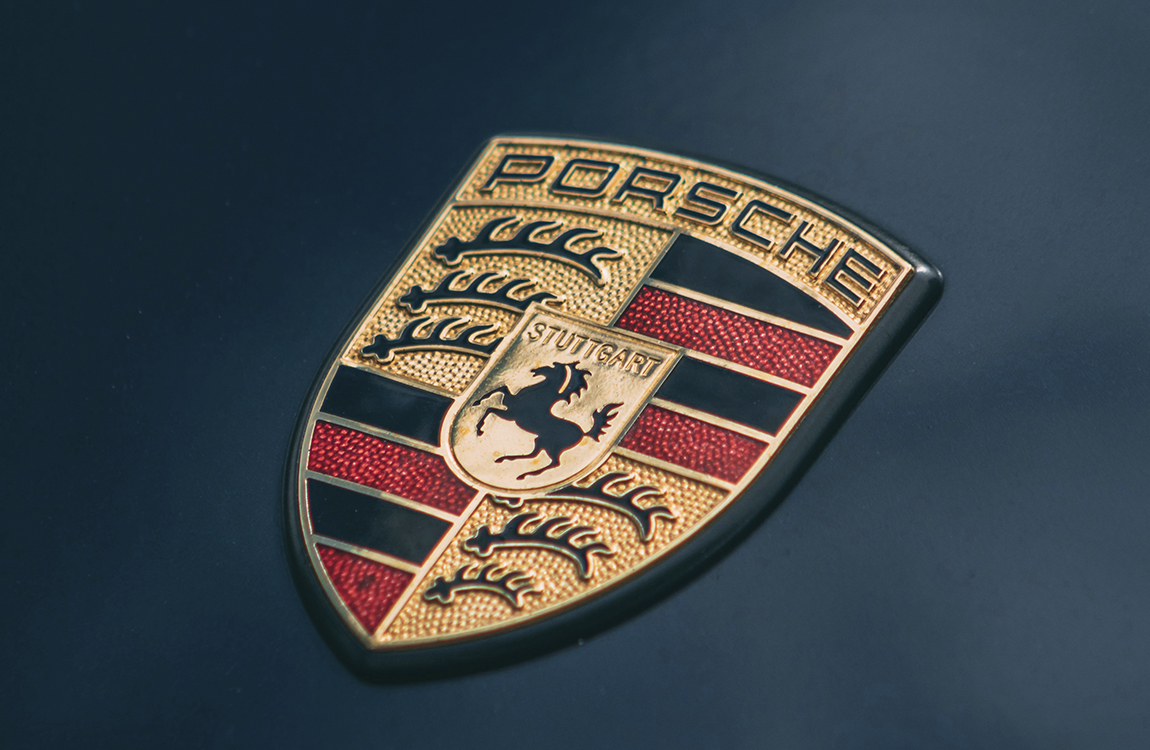How Porsche Became a Top Automotive Luxury Brand
Porsche is one of the globally renowned automobile brands, known for its unique design and exceptional performance, making it a dream car for many enthusiasts. However, becoming a top-tier automotive brand is no easy feat; it requires a long and arduous journey.
The origins of the Porsche brand can be traced back to the early 20th century when its founder, Ferdinand Porsche, was an automotive engineer and designer. His expertise in automobile manufacturing and his pursuit of innovation quickly earned him a reputable status in the industry.
In 1919, Ferdinand Porsche established his own engineering firm and began providing design and engineering services to other automotive companies. His talent and experience were soon recognized within the industry, laying the foundation for him to establish his own brand.
However, the turning point that catapulted Porsche into a top-tier automotive brand came in the 1930s. At that time, Ferdinand Porsche was commissioned by the National Socialist government of Germany to participate in a project called the "People's Car Program," aimed at producing an affordable family car. This project eventually evolved into the birth of the Volkswagen Beetle.
The success of the People's Car Program brought immense commercial and reputational success to Porsche. Ferdinand Porsche's design talent and engineering expertise were showcased in this project, earning him more collaboration opportunities and the trust of clients. The success during this period laid a solid foundation for the development of the Porsche brand.
Following the end of World War II, Porsche began focusing on its own brand development. They introduced a range of racing and sports cars, achieving remarkable accomplishments in the racing field. The success of these racing cars earned Porsche more acclaim and a growing following, gradually establishing its brand as an icon in the automotive industry.
However, to become a top-tier brand, mere performance and technology are not enough. Brand design plays a crucial role in this journey. Porsche's brand design is distinctive and elegant, setting it apart from numerous competitors.
Firstly, Porsche's design possesses unique recognition. Whether it's the 911, Boxster, or Cayenne, each Porsche model has its distinctive exterior features, such as streamlined bodywork, iconic headlight designs, and signature rear spoilers. This design sets Porsche models apart from the crowd, instantly recognizable at a glance.
Secondly, Porsche's brand design blends traditional and modern elements. Porsche models retain many classic design elements, such as circular instrument clusters and the iconic Porsche emblem, while incorporating modern design details like sharp lines and stylish interiors. This fusion of tradition and modernity gives Porsche models a timeless appeal while capturing the essence of the era.
Moreover, Porsche's brand design emphasizes performance and sportiness. Each Porsche model pays meticulous attention to detail and craftsmanship to achieve optimal performance and driving experience. The cockpit layout and seat design are carefully engineered to ensure maximum comfort and control for the driver. This pursuit of performance and sportiness sets Porsche apart in the sports car market.
Lastly, Porsche's brand design plays a crucial role in shaping its unique story and values. Porsche models represent luxury, precision, and a unique driving experience. Owning a Porsche is not just about having a car; it's a lifestyle and a pursuit of quality for many enthusiasts. The communication of these values ingrains Porsche's brand image in people's hearts.
In conclusion, the process of Porsche becoming a top-tier automotive brand is a long and ongoing effort. From Ferdinand Porsche's entrepreneurial beginnings to the success of the People's Car Program and the introduction of racing and sports cars, each step laid the foundation for the brand's development. Simultaneously, Porsche's brand design plays a pivotal role in shaping its distinct image and values. The unique recognition, fusion of tradition and modernity, emphasis on performance and sportiness, and communication of the brand's story and values are all key factors in Porsche's success.
References:
1. Storz, G. (2009). Porsche: The Legendary Cars. Motorbooks International.
2. Leffingwell, R. (2012). Porsche: Fifty Years of the 911. Motorbooks.
3. Ludvigsen, K. (2017). Porsche: Origin of the Species. Bentley Publishers.
保時捷如何成為頂級汽車品牌
保時捷(Porsche)是全球知名的汽車品牌之一,其獨特的設計和卓越的性能使其成為許多車迷心中的夢幻之車。然而,要成為一個頂級汽車品牌並不容易,它需要經歷一個漫長而艱辛的過程。
Porsche品牌的起源可以追溯到20世紀初期,當時的創辦人費迪南德·保時捷(Ferdinand Porsche)是一位汽車工程師兼設計師。他在汽車製造領域的專業知識和對創新的追求使他成為了當時頗具聲望的人物。
1919年,費迪南德·保時捷創立了自己的工程事務所,並開始為其他汽車公司提供設計和工程服務。他的才華和經驗很快受到了業界的認可,這為他日後建立自己的品牌奠定了基礎。
然而,真正使Porsche成為頂級汽車品牌的契機是在20世紀30年代。當時,費迪南德·保時捷受到了德國國家社會主義政府的委託,參與了一個名為「人民車計劃」的項目,旨在生產一款價格實惠的家用汽車。這個計劃最終演變成了大眾甲殼蟲(Volkswagen Beetle)的誕生。
人民車計劃的成功為保時捷帶來了巨大的商業和聲譽上的成功。費迪南德·保時捷的設計才華和工程專業知識在這個項目中得到了充分展示,使得他贏得了更多的合作機會和客戶的信任。這一時期的成功為Porsche品牌的發展打下了堅實的基礎。
在第二次世界大戰結束後,Porsche開始專注於自己的品牌發展。他們推出了一系列的賽車和運動汽車,並在賽車領域獲得了驚人的成就。這些賽車的成功為Porsche贏得了更多的聲譽和追隨者,使其品牌逐漸成為了汽車界的一個偶像。
然而,要成為一個頂級品牌,單純的性能和技術並不足夠。品牌設計在這個過程中扮演了關鍵的角色。Porsche的品牌設計獨特而優雅,將其與眾多競爭對手區分開來。
首先,Porsche的設計具有獨特的辨識度。無論是911、Boxster還是Cayenne,每款保時捷車型都有其獨特的外觀特徵,如流線型的車身、經典的前燈造型和標誌性的後尾翼。這樣的設計使得保時捷車型在眾多車輛中脫穎而出,讓人一眼就能辨認出它的身影。
其次,Porsche的品牌設計融合了傳統和現代的元素。保時捷車型保留了許多經典的設計元素,如圓形儀表盤和經典的保時捷徽標,同時又加入了現代的設計細節,如銳利的線條和時尚的內飾。這種傳統與現代的結合使得Porsche的車型在設計上既具有經典的魅力又展現出時代的氛圍。
此外,Porsche的品牌設計還強調了性能和運動性。每款保時捷車型都注重細節和工藝,以實現最佳的性能和駕馭體驗。車內的操控配置和座椅設計都經過精心設計,以確保駕駛者能夠得到最大的舒適性和控制感。這種對性能和運動性的追求使得Porsche在運動汽車市場上獨樹一幟。
最後,Porsche的品牌設計在塑造其獨特的故事和價值觀方面也起著重要作用。保時捷車型代表著奢華、精確和獨特的駕駛體驗。對於許多車迷來說,擁有一輛Porsche不僅僅是擁有一輛汽車,更是一種生活方式和對品質的追求。這種價值觀的傳達使得Porsche的品牌形象更加深入人心。
總結來說,Porsche成為一個頂級汽車品牌的過程是一個漫長而持續的努力。從費迪南德·保時捷的創業起步,到人民車計劃的成功,再到賽車和運動汽車的推出,每一步都為品牌的發展打下了基礎。同時,Porsche的品牌設計在塑造其獨特形象和價值觀方面起到了關鍵作用。獨特的辨識度、傳統與現代的結合、強調性能和運動性,以及對故事和價值觀的傳達,這些都是Porsche品牌成功的關鍵因素。
參考文獻:
1. Storz, G. (2009). Porsche: The Legendary Cars. Motorbooks International.
2. Leffingwell, R. (2012). Porsche: Fifty Years of the 911. Motorbooks.
3. Ludvigsen, K. (2017). Porsche: Origin of the Species. Bentley Publishers.
